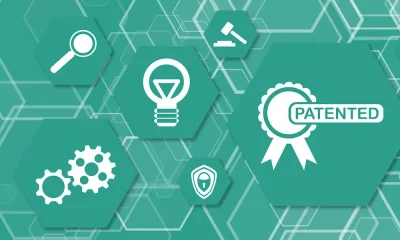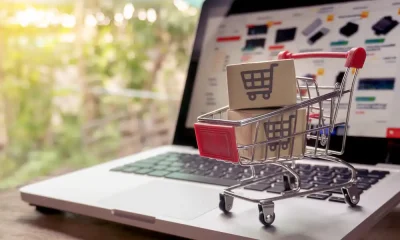General
The Most Significant Threats To Businesses Today

In the world of business, every generation of business owners has unique challenges. What do you think are the top business threats today? We’re now living with a new normal that includes organizations uptaking new technologies and digital transformation of business processes.
Technology is an opportunity; however, it is still among the top four business threats today. Plus, there are the political highs and lows, fluctuations in trading, and the use of economic stimulus (money printing).
Threats to businesses also include global conflicts. The war in Ukraine has accelerated inflation and impeded supply chains, travel, energy use, and more.
How do you turn threats into business opportunities? This business blog looks for opportunities in the top 4 most significant business threats.
- Technology
- Globalization – what’s really going on?
- The Shifting Face of Labor – the future of Work
- The Speed of Change
How do you know what business threats are?
Let’s begin with the methodology businesses use to identify strengths, weaknesses, opportunities, and threats – the SWOT analysis.
SWOT
At any given time, it is essential to understand the company’s and industry’s SWOT (strengths, weaknesses, opportunities, and threats) so intelligent choices are made along the way. For example, if the timing is off, a business will keep investing in additional staff or equipment. Plus, there may be an opportunity to release a new service or product due to increasing demand prompted by environmental, economic, or political conditions.
Here are the top four most prominent threats to businesses today:
1 – Technology
The impact of new technologies can be a game-changer or require minor adjustments. For example, ‘going digital’ or taking your business online will please many customers but not those adverse to change. These people are typically in the ‘laggards’ group of the technology adoption curve and are the last to switch to newer technologies.
Software and apps have increased efficiencies within the business and opened up the global economy as clothes are likely to have been made in more than one country.
COVID-19 looks at how quickly we have adapted to online collaboration tools for team and customer meetings and workflow management. Remote working is the new normal due to these new technologies, which will only get smarter with AI, VR, and NLP. Technology can provide opportunities as well as threats.
Many industries struggle directly or indirectly with the speed of technological change, and sometimes they can be replaced by startups providing a product or service which is far superior. For example, Uber and ride-sharing have disrupted the taxi industry, so traditional taxi firms that are slow to adapt have gone out of business.
One of the biggest threatss to businesses is believing that new entrants are not a real threat. Or that your systems are safe from hackers and cybercrime.
No website or network is safe or protected entirely from cyber criminals who are always one step ahead. How quickly you react to a perceived threat by applying security updates, changing passwords, antivirus protection, and so on can be the difference between being an easy target and being seen as a hard nut to crack.
There will always be the threat of cybercrime. The payout is too good, and hackers use innovative ways to get to your systems, including AI-assisted ransomware.
Security threats due to global conflicts
Additionally, businesses need to contend with security threats due to global conflicts. With the USA and Russia on opposing sides, cyberattacks are rampant, and companies need to be hyper-alert.
CISA.gov says the Russian state-sponsored cyber actors are targeting USA organizations, particularly health, energy, aviation, critical manufacturing, and more. Key individuals, including journalists, politicians, and leaders in the UK and Europe. For example, the Computer Weekly magazine report of 871 encrypted emails from former MI6 Head Richard Dearlove was incepted, and documents leaked.
Technology lessons have been learned already, including Ukraine having servers offshore that can kick into action when onshore servers are compromised. Businesses can follow suit and ensure they don’t have all their eggs in the one onshore ‘hosting provider’ basket.
The businesses that mitigate against these technology risks can have confidence that they can prevent most threats, and in the event of an attack, they can recover quickly.
2 – Globalization
Each business is now competing in every market in the world. Again, this is a product of technology but has become a point of concern in and of itself. It is easier than ever to send work overseas, find products from other parts of the world, and communicate with potential partners in other countries. This all creates new challenges for businesses.
Due to international laws, a company may be limited in what they can do about some of these challenges, but that only means they need to be more creative in combatting them. For example, if your company’s product or service can be outsourced overseas at a much lower cost, you need to consider another way to make yourself more appealing at a higher price point. This is a challenge in a cost-obsessed environment, but not impossible.
Taking your business local and appealing to local customers is one on-trend movement. Local SEO and marketing strategies are reversing the focus on ‘global.’ For example, Google prioritizes local search results.
3 – The Shifting Face of Labor
Younger generations of the labor force have spent their entire lives in a world of massive connectivity, so working remotely, online, and using collaboration tools is their comfort zone. Older workers are more challenged with isolation, affecting their mental health.
For businesses, the threat is retaining staff and attracting new hires. For example, UK or European workers are remote working for firms in Australia, the USA, Canada, and vice versa.
Suddenly there’s a massive pool of jobs and job applicants as we all become a global workforce.
4 – The Speed of Change
We touched on this topic earlier, and it’s not just technology evolving that’s forcing businesses to play catch-up. There is a need for risk mitigation across many areas of the company to anticipate changes due to global conflicts.
The level of flexibility that companies need is something relatively new. While it is essential to display consistency so that consumers know what to expect, if a company allows that consistency to turn into stubborn continuity at all costs, there will be a price to pay.
Staying Vigilant
If only we could accurately predict the future, we’d all be set up for success. Understanding the threats to businesses is the starting point. Action to remove or reduce the impact of the threats is needed too.
Today, company executives must be as vigilant as ever to ensure their businesses are prepared to turn threats into opportunities.









